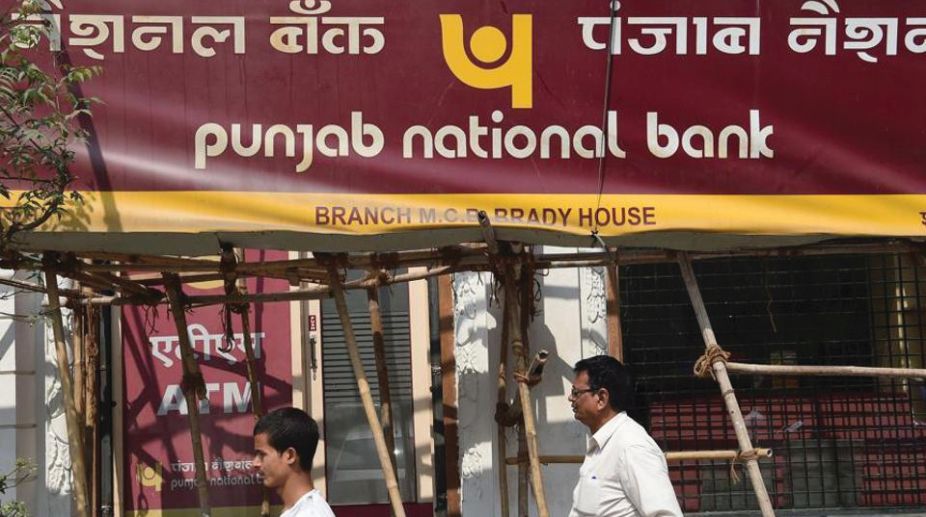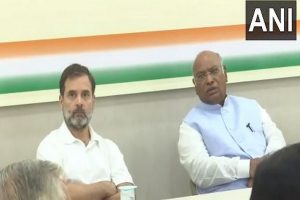More and more skeletons are tumbling out of the rotten cupboards of the PNB-Nirav Modi scam. The size of the cupboard seems to be increasing each day, drawing more and more Public Sector Banks (PSBs) into its ever widening spiral of fraudulence.
The narrative is also quite familiar ~ use high connections to get huge loans from PSBs without any collateral, use the money for profiteering by cheating through the innovative Ponzi mechanism or laundering, park the profit outside the country and keep the travel papers ready to flee to the safety of a foreign land just when the scam is about to break with cyclonic fury.
Then a familiar old pattern follows ~ stock markets tumble, raids are conducted on empty cages from where the bird has flown away with the feed, left-out assets are attached, probes are launched, fiery speeches are made inside and outside Parliament and accusations flow thick and fast.
And all the while the bank that takes the hit meekly provides for the loss at the cost of the public exchequer.Then everything is back to business as usual; probes lose their steam, names of the high and mighty involved in the scam are never revealed, recovery from the seized assets gets entangled in legal complications and new fraud entrepreneurs enter the field using the same old rules of the game.
The short arm of Indian law never reaches the fraudsters who continue to wallow in luxury in foreign shores enjoying the fruits of their ill-gotten wealth.
Just to reckon the cost to the public exchequer, between 2008 and 2017, the government had infused capital worth Rs 1.19 lakh crore into the PSBs, with another Rs 2.11 lakh crore in the pipeline to recapitalise them to tide over their NPA crisis.
The scam, whose magnitude has now swelled to Rs 14000 crore and is still counting, has exposed several serious chinks in the armour of our banking and financial system, 70 percent of which is controlled by the PSBs in which we trust our life’s savings.
It has exposed not only the absolute lack of internal control in them, but brought into question the accountability of the banking regulator RBI which is now scurrying for cover and inventing excuses.
Hundreds of fictitious LoUs issued without any security and orchestrated through the global SWIFT system bypassing the Core Banking System to remain undetected for seven years only through the machinations of some middle level managers is like a phantom story, except that it isn’t true. We shall never find out the real life characters hiding comfortably in the shadow of Gokuldas Shettys, now that Nirav Modi is gone forever, like Vijay Mallya.
But why blame the RBI alone, the bank’s own Board of Directors, the Ministry of Finance, the Ministry of Financial Services, the Bank Board Bureau, the Internal and External Auditors of the Bank, and the Central Vigilance Commission (CVC) ~ all these agencies were supposed to exercise effective oversight, but none smelled a whiff of what was going on underneath their noses for seven long years.
Now each entity is blaming the others. The Finance ministry remains blissfully clueless about the affair, and in what looks like a joke, the PNB, was also given an award for excellence in vigilance by the CVC in 2017. As the Nobel Laureate Joseph E. Stiglitz had said, “We have banks that are not only too big to fail, but too big to be held accountable.”
It is pointless to dwell on how Nirav Modi and Mehul Choski had used the LoUs in a Ponzi scheme to defraud their naive and trusting bankers and fooled them.
Public anger is giving way to demands for privatisation of PSBs. The demands are indeed justified as the Government has no business to be in business that it cannot manage. But privatisation may not be the answer, because the issue is regulation rather than ownership.
Besides, there is absolutely no political appetite for privatisation of PSBs. An overwhelming majority of Indians would save their money in the PSBs rather than private banks on the mistaken belief that their money is safer with the former, and no government, irrespective of the political dispensation, would dare push for privatisation and alienate the voters.
Privatisation of PSBs is a no brainer. All that the Government can hope to achieve is offloading of their stakes in PSBs, and more mergers to achieve better economics of scale.
Nationalisation of banks had altered the banking scenario in the country, even though the situation may not be the same today. Just before nationalisation in June 1969, there were only 1,833 rural and 3,342 semi-urban bank branches; by March 1991, the numbers had grown to 35,206 and 11,344 respectively and the total number of branches increased from 8,262 to 60,220.
The non-urban areas were practically unbanked before nationalisation, and massive expansion in bank branches took banking to rural areas. This would never have been possible without nationalisation, which also channelled 40 per cent of the lendable funds to what the government had defined as the priority sector, comprising agriculture, SSI, MSME, housing and educational loans etc.
The ratio of priority sector credit to total credit rose from 14 to 37.7 per cent between 1969 and 1991, which is significant because a vast majority of Indians still derive their livelihood from these ‘priority sectors’, which were practically excluded from bank credit by private banks before nationalisation.
It certainly loosened the vice-like grip of private moneylenders in the rural areas, if not eliminating them altogether. PSBs helped the poorest of the poor through their Differential Rate of Interest loans, extended loans to thousands of women’s self-help groups and funded rural infrastructure through the Rural Infrastructure Development Fund.
Without the PSBs, financial inclusion and opening of 31 crore Jan Dhan Accounts would have remained a fantasy.
Banks cannot be the agents of change, they can only play a supportive role. Nationalisation could have become a game-changer if it was backed up by appropriate policies and programmes; unfortunately the government’s strategy remained short-sighted.
The social welfare model was given prominence over capital and employment creation which alone could have addressed the problems in the long term. The rural scenario thus remained unchanged.
Once politicians got unfettered control over the PSBs, cronyism, corruption and interference became the order of the day, when we actually needed a renewed focus on management, strengthening of regulatory institutions and ensuring public scrutiny.
After liberalisation, the PSBs were made to compete with the private sector, including foreign banks, and chase quick profits which could only come from corporate loans.
But the management still remained captive to the politician-bureaucrat nexus, which forced it to give loans to industries and people regardless of their viability. The result was the NPA crisis and ballooning of defaulting loans. The strategy went completely berserk.
It is not that scams are absent in the private sector, but given that 70 per cent of the banking scenario is dominated by the PSBs, naturally the law of probability would work against the PSBs.
This sector lost at least Rs 22,743 crore owing to fraudulent banking operations between 2012 and 2016, according to an IIM-Bangalore study. The Government informed Parliament recently that 25,600 cases of banking fraud worth Rs 1.79 billion were reported till December 21, 2017.
According to data released by the apex bank for the first nine months of FY17, approximately 455 cases of fraud transactions ~ each of Rs 1,00,000 or above ~ were detected at ICICI Bank; 429 at State Bank of India, 244 at Standard Chartered Bank and 237 at HDFC Bank. Most of these frauds were perpetrated through the collusion of bank employees themselves, indicating loose internal controls.
Banking scams have also been surfacing with astonishing frequency since a long time involving almost all PSBS. Side by side, bad loans have been increasing alarmingly ~ between 2013 and 2017, their amount has quadrupled from Rs 28,417 crore to over Rs 1.1 lakh crore.
While some of this would be due to interest being added, the quantum of the increase is too large to be accounted by interest alone. “Wilful default” ~ defaults despite the borrowers’ paying capacity ~ has also been rising.
The cumulative total of more than 50 companies or groups each with over Rs 250 crore of “wilful default” works out to about Rs 48,000 crore, 80 per cent of which are due to PSBs alone.
RBI data shows that between April 2013 and December 2016, all commercial banks, including the private ones, lost Rs 66,066 crore to 17,504 frauds, in which there were, 2,084 cases (12 pere cent) involving insiders.
Still, as history has shown, a scam has nothing to do with ownership. Lehman Brothers, Royal Bank of Scotland or Merrill Lynch were not controlled by their governments, yet collapsed due to scams. The elephant in the room is a strict and effective regulatory mechanism we have never cared to establish.
(To be concluded)
The writer is a commentator. Opinions expressed are personal












